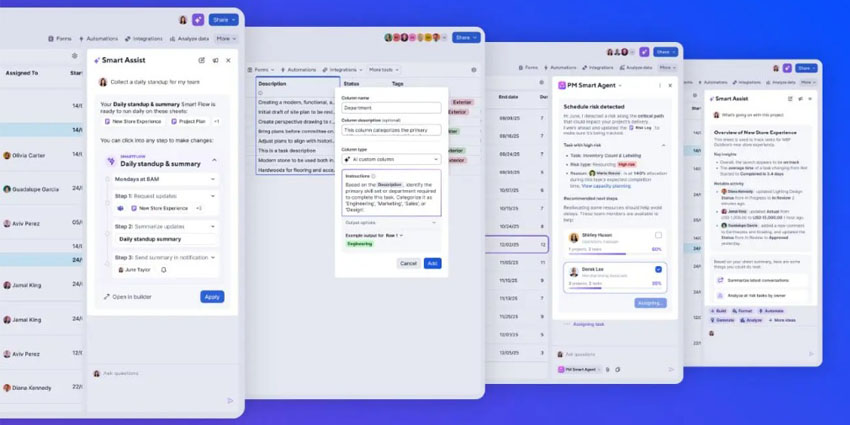The pandemic forced business organizations to move to remote working. Now that restrictions have lifted in certain parts of the world, and the global population is increasingly getting vaccinated, businesses can incorporate a hybrid work model that combines WFH with in-office presence.
What Is a Hybrid Work Model?
The hybrid work model is a mix of in-office and remote working. In this setup, employees can choose between working from home or the office. This working model has added advantages for both employers and employees, such as increased productivity, employee engagement, and decreased travel time.
Defining Traits of a Hybrid Work Model
Certain traits are essential for a successful hybrid work model. They are:
- Flexibility – The most important aspect of a hybrid work model is the ability to be flexible. Employees should have the freedom to choose when and where they want to work. This flexibility also applies to working hours. For instance, an employee who prefers to work from home may be more productive during the night, so they should be able to adjust their working hours accordingly.
- Communication – Since employees will be working from different locations, it is essential to have a sound communication system. There must be a clear and concise way for employees to communicate with each other, whether it is through video conferencing, instant messaging, or email.
- Collaboration – When remote employees work on numerous projects, a cohesive system is critical for ease of communication. Project management software or online collaboration platforms can help achieve this goal.
- Trust – There must be trust between employer and employee for the hybrid work model to succeed. Employees must trust that their employer will allow them the flexibility to work from different locations, and employers must trust that their employees will be productive even when they are not in the office.
Make policies and processes that are easy to understand
The first step is to develop policies and processes that are easy to understand and follow. All employees should be aware of the hybrid work model and how it will work.
There should be clear guidelines so employees know what employers expect of them. Employers should communicate to all employees to avoid confusion. Returning to pre-pandemic policies to boost employee productivity will be difficult and near-impossible. Even after a company realigned its working model, it should regularly update policy documents to accommodate dynamic requirements.
Create a hybrid working approach that includes training and development
The second step is to create a hybrid working approach that includes employee training and development. , Employers should train employees on how to use the communication and collaboration tools they will use in the hybrid work model. Employees should also be allowed to develop their skills to be more productive in this new working environment.
Ensure staff has access to the necessary technology and infrastructure
For a hybrid work model to succeed, employers must give staff access to the necessary technology and infrastructure. This includes a laptop, a reliable internet connection, and the right software purpose-built for hybrid work. Further, employees should also be allowed to learn how to use these tools to be more productive. Access to the technology and infrastructure should be equitable so that workplace experiences are inclusive regardless of the employee’s location.
Make it simple for your employees to communicate
The way you communicate inside your company will significantly impact whether or not a hybrid working model will succeed.
Adopting an asynchronous form of communication, which allows your team to interact without having to answer instantly, is a good option. You will give your staff whatever they need to do the assignment and then let them finish it in the time provided. Employees may ask queries or offer progress reports without you needing to be present all day if there are any concerns. Real-time communication channels should also be active to maintain connectivity across the workday.
Best Practices for Hybrid Work in 2022
For many employers, the hybrid work model strikes a perfect balance between the flexibility of working from home and the benefits of working in an office. If you’re thinking about adopting a hybrid work model for your business, here are some best practices to keep in mind:
- Define work-life boundaries – Working from home can help you get much more done, but setting certain limits is necessary, so employees don’t feel compelled to be available 24/7. Work-life boundaries will ensure employees get enough rest, take breaks, and spend time with their families.
- Stay organized – Now that employees are working from home and the office, it is more important than ever to keep the work area organized. This will help the workforce stay productive and not get overwhelmed.
- Invest in the right technology – To make a hybrid work model work, companies need to invest in the right technology for their workers. This includes communication tools, softphones, digital whiteboards, and more.
Conclusion
A hybrid work model can provide the best of both worlds for employees and employers. It can offer employees flexibility and freedom while also providing stability and structure that employers need. Working from home is not entirely eliminated when you switch to a hybrid work model. Instead, it evolves into a vibrant hub for interaction and collaboration, open to everyone, regardless of workplace preference.







